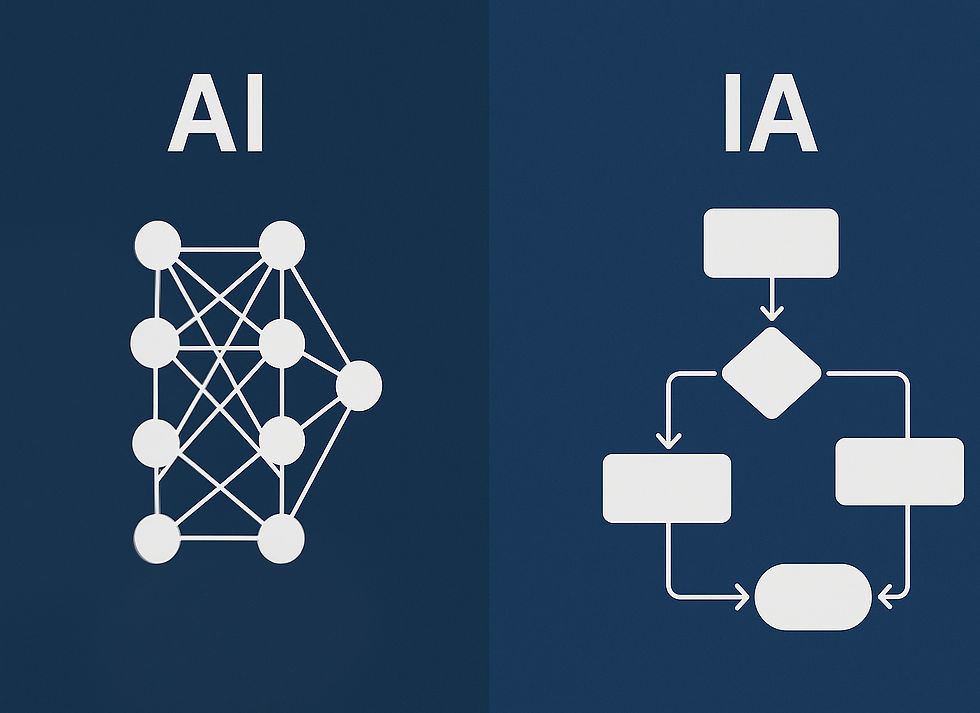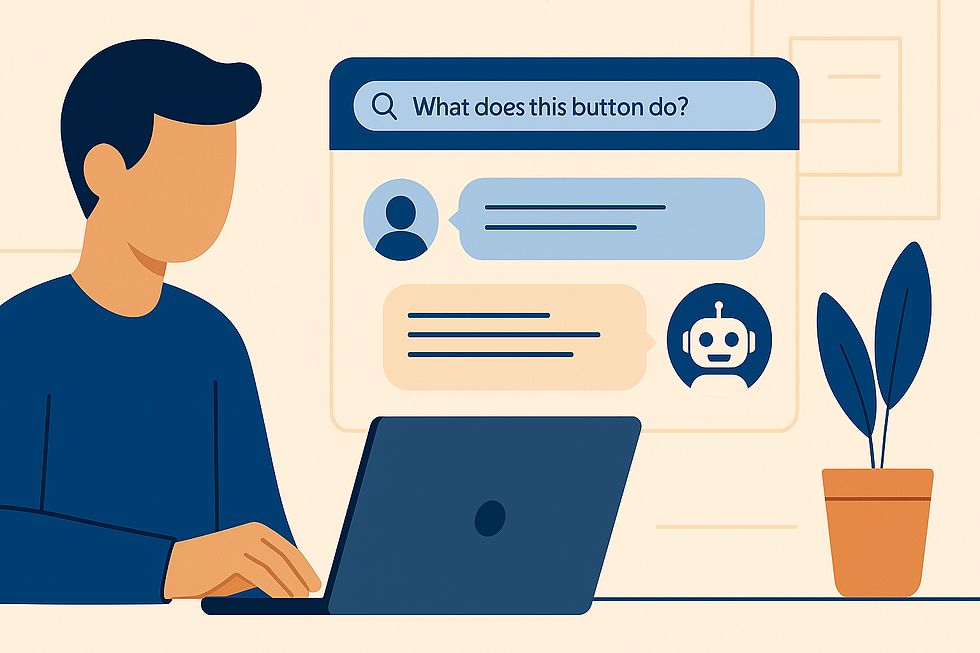AI vs IA: The Confusion, the Tech, and the Buzzwords
- Anne Werkmeister
- Jun 30, 2025
- 2 min read

We hear it all the time: “This process is AI-powered.”
“Our system uses IA to streamline workflows.”
But ask someone to explain the difference between AI (Artificial Intelligence) and IA (Intelligent Automation), and most answers start to fall apart.
These two concepts are often bundled together in business conversations, yet they rely on very different architectures and logics.
Let’s clear it up, technically, not just semantically.
Artificial Intelligence (AI): Mimicking Human Cognition
AI relies on models, often neural networks, that simulate how the human brain learns and makes decisions. You input data, the AI processes it through a mesh of weighted nodes (neurons), and it generates an output.
But what’s key is this: AI does not follow a fixed path. It builds probabilistic associations, learning from large datasets. Its logic is non-linear, and often not fully explainable (black box effect)
AI answers the question: “Based on what I’ve seen, what’s the most likely outcome?”
It’s trained, not hardcoded.
Its strength: pattern recognition, language understanding, classification.
Its weakness: lack of transparency, risk of hallucination, and unpredictable edge cases.
Example: A neural network analyzing millions of skin images to identify melanoma. It doesn’t follow rules; it learns what looks cancerous.
Intelligent Automation (IA): Logic + Rules + (Sometimes) AI
IA is fundamentally workflow-based. It’s about connecting systems, data, and tasks to remove manual steps, and it follows clear, traceable decision trees.
IA systems can incorporate AI components (e.g., OCR or NLP), but the backbone is deterministic:
Inputs are routed through pre-defined rules or logic engines.
You can map the entire flow , like a well-documented process diagram.
Every step is explainable, testable, and auditable.
Example: An invoice approval process that extracts text with AI (OCR), checks totals against a purchase order, flags discrepancies, and routes exceptions to a manager.
AI = Decision-Making | IA = End-to-End Execution
Think of it this way:
Component | AI | IA |
Logic Type | Probabilistic / Adaptive | Deterministic / Rule-based |
Flow | Non-linear (Neural networks) | Linear or branching logic |
Transparency | Low (“black box”) | High (“white box”) |
Use Case | Image recognition, NLP | Process automation, RPA |
Role | Cognitive engine | Workflow orchestrator |
Most real-world solutions labeled as “AI” are actually IA platforms with a few AI features baked in. That’s not a bad thing, but it’s important to know the difference when evaluating tools or building solutions.
Why It Matters
If you need auditability and consistency, IA should be your foundation.
If you need adaptive logic or human-like analysis, bring in AI, carefully.
If you want ROI and scalability, combine them: AI for cognition, IA for execution.
Don't Just Automate, Understand What You're Automating
At Romulus Technology, we don’t use buzzwords to impress, we use the right architecture for the right outcome. Whether we’re building intelligent automation systems or integrating AI for smarter decisions, our mission is to make sure humans remain in control, and automation actually delivers results.



Comments